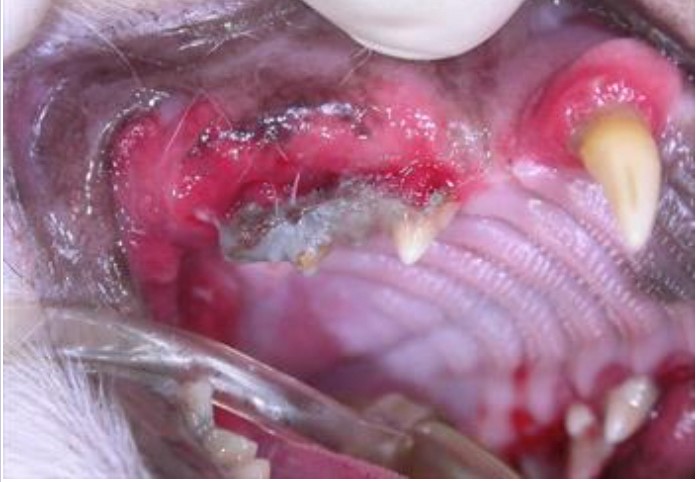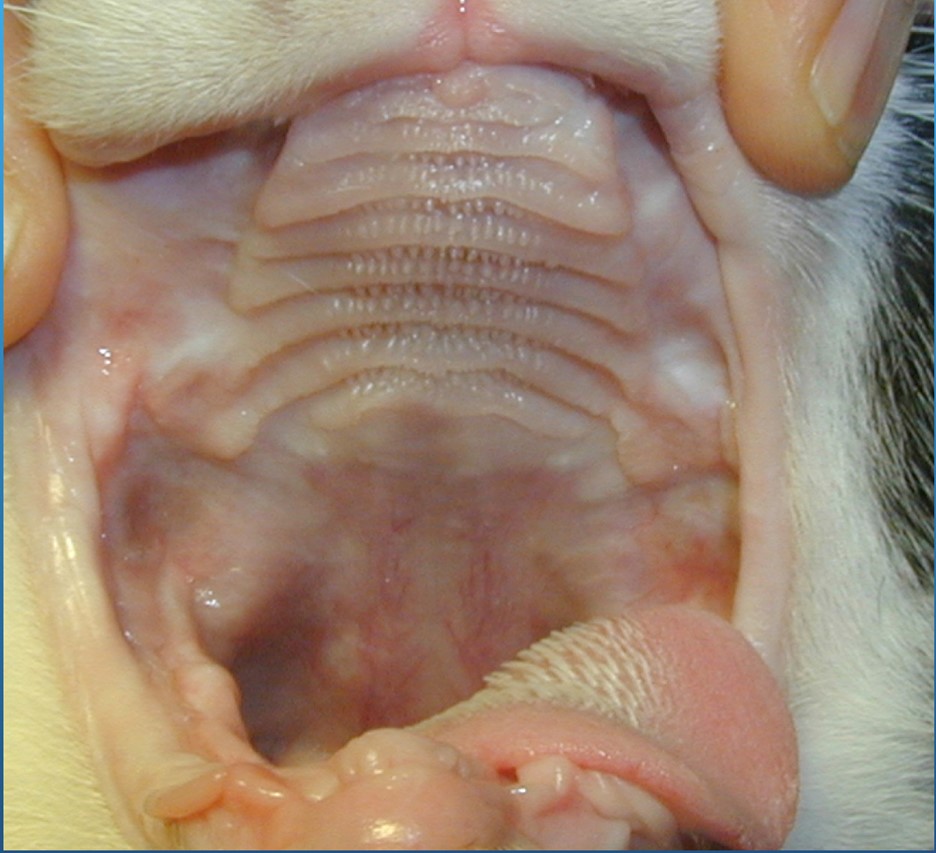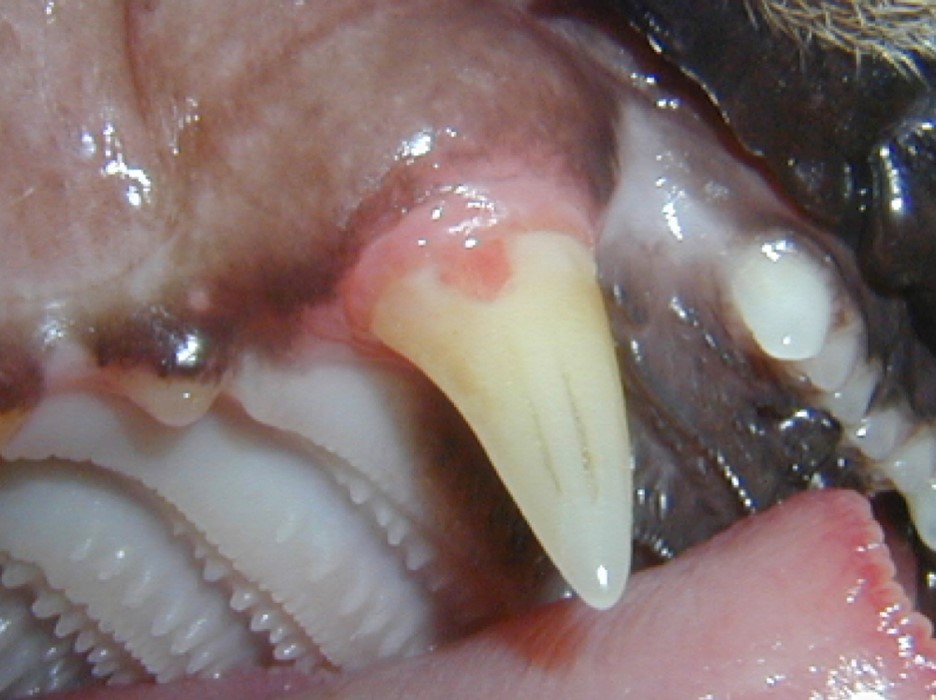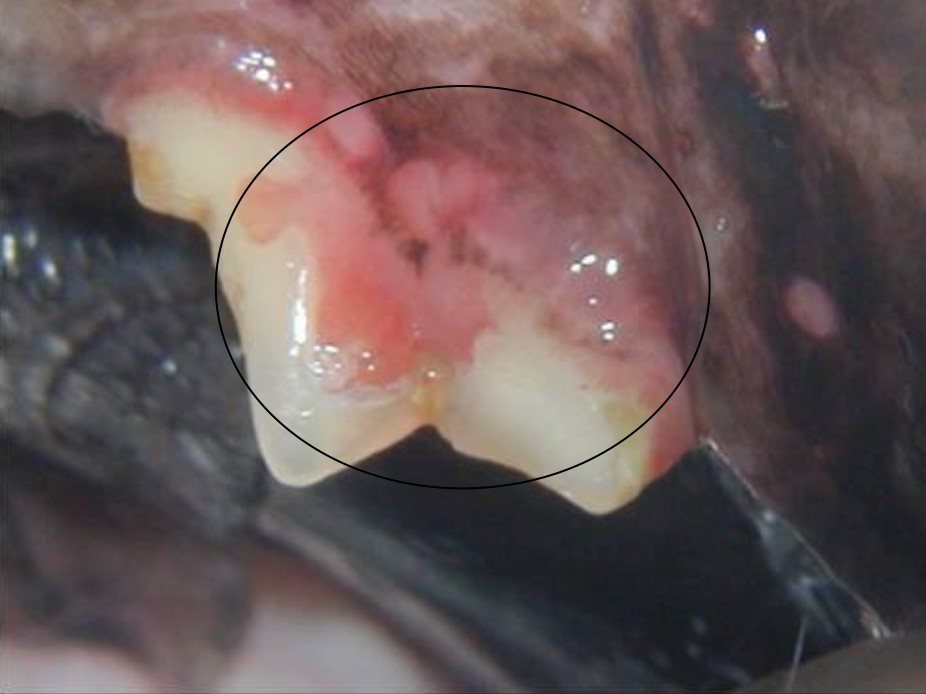How do I know if my cat needs dental care?
Cats, due to their independent nature and tendency to hide discomfort, can make it challenging for p...

The doctors at Carefree Dentistry and Oral Surgery for Animals are the experts at diagnosing and treating a wide range of oral diseases. Kitties suffer the same dental and oral challenges as dogs; however, they also have their own unique set of oral disease.
Feline Stomatitis has had many names in the past such as Lymphocytic Plasmocytic Stomatitis, Ulcerative Stomatitis or Gingivostomatitis. Thank goodness the name has been simplified to Feline Stomatitis.
Feline Stomatitis can be very painful. As an example of the pain that it can cause is when a kitty suffers a fractured jaw it will often eat after the initial insult. Kitties with severe stomatitis may not eat. That suggests that stomatitis can be more painful than a fracture!
A common history is a kitty with a good appetite that will take a bite of food, shake its head, salivate excessively (often with blood-tinged saliva) and run away.
The exact cause of stomatitis is unknown. The most likely theory is that it is an autoimmune disease. Plaque is a film of bacteria that is constantly present on the surface of our teeth. An over simplified but logical explanation would be that kitties with stomatitis are having an allergic reaction to the plaque.
Of kitties with stomatitis, 92% of them will have severe periodontal disease (disease of the supporting structures of the tooth), 49% will have painful tooth resorption and 56% will have retained tooth roots. Therefore, a complete oral health assessment and treatment is absolutely necessary.
It has been proven that surgical treatment of stomatitis is often more effective than medical treatment. The surgical treatment is most often the removal of all teeth and on occasion removal of teeth behind the fangs.
One may ask how will my kitty eat? The answer to that question is most will eat better and without pain.
Let’s talk results. Of 10 kitties that must have all their teeth removed, on recheck examination three of them will be pronounced cured at that recheck. The remaining seven kitties will require supplemental medical therapy. After six months of medical therapy, another five kitties will get well or will reach a satisfactory level of improvement.
That is eight of ten kitties either cured or with marked improvement…not bad. One of the 10 kitties will require lifelong medication to remain comfortable, and one of the 10 kitties will not respond to any treatment



Feline Tooth Resorption (TR) is a very painful and common condition of kitties. It is estimated that most kitties over the age of five years old will have at least one TR lesion. If your kitty is missing a tooth, it is very likely that TR is the cause.
It is not known what exactly causes the tooth resorption. TR looks and acts like a typical carie (cavity), however, it is not caused by bacteria like a cavity, therefore it cannot be treated (filled) as such.
For many unknown reasons, a normal and typically useful cell, called an odontoclast, goes bonkers. It assumes the role of “Pac-Man” and starts eating teeth. If the TR occurs above the gumline it is extremely painful, and sadly, the only treatment is extraction. TRs under the gum line are often not painful (we know this by asking people with TR). These teeth are only extracted if a tooth fracture is imminent.


Kitties do not fracture as many teeth as do dogs, however when they do it usually the canine/fang teeth. Often the tip can be fractured exposing the nerve and is easily overlooked. Before any fractured tooth can be treated an x-ray must be obtained. There are only two options, root canal therapy or extractions. The results of the oral exam and x-rays will dictate the proper treatment.
Juvenile gingivitis is of unknown cause. It is a severe inflammation of the gums (gingivitis) that occurs in kitties typically six to nine months of age. Often these kitties will have severe periodontal disease (disease of the supporting structure of the teeth) in conjunction with severe gingivitis.
The treatment includes a complete oral health assessment and treatment (COHAT) that may include selective extraction of diseased and painful teeth. The COHAT often must be every three to six months. Many kitties will spontaneously resolve by two years of age…some morph into Feline Stomatitis (see above).

Cats, due to their independent nature and tendency to hide discomfort, can make it challenging for p...
Dental disease in cats is often underdiagnosed, maybe because they are harder to be put in front of ...
In the sprawling city of Phoenix, cat lovers are on the constant lookout for specialized care for th...
When it comes to our pets, their health and well-being are of paramount importance. Just as humans r...
Cats with dental disease are frequently misdiagnosed, possibly because getting them to the doctor is...
Like people, cats can have oral health problems like rotting teeth. Periodontal disease and/or felin...
The thought of taking your feline companion to a dentist may seem odd at first, as we often correlat...